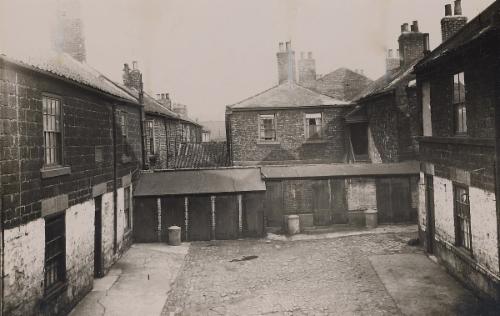
Housing Courts
...including Yards
An area or a short road that is not covered by a roof and is mostly or completely surrounded by buidings. There were many courts in old Gateshead and some are on this page. The word Court is also used for tower blocks
Title: Lees Court, High Street, Gateshead
Photographer: Gateshead County Borough Public Health
Date: C1937
iSee Gateshead Old Pictures Ref: GL001840
This photograph shows was one of the many
small courts and alleys to run off the High Street which by the 1930s
were considered to be slums. Under the Housing Act of 1930, the Council
was given much greater legal power to deal with slum housing. The Act
meant that whole areas of housing could be demolished and between 1932
and 1935 many of the streets in and around the town centre were acquired
by compulsory purchase order and demolished. (Manders, 1973)
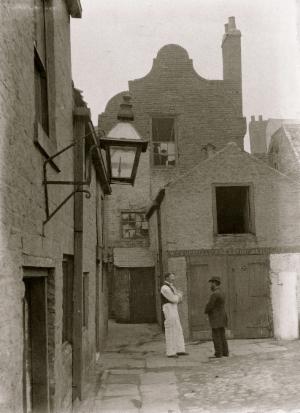
Title: Liddle's Yard, Gateshead High Street, c1885
Photographer: Dodds, E.
Date: C1885
iSee Gateshead Old Pictures Ref: GL004399
Note sign on "stable" W. Campbell Wine and Spirit Merchants
For a Haven sent Holiday Break
Click this Link
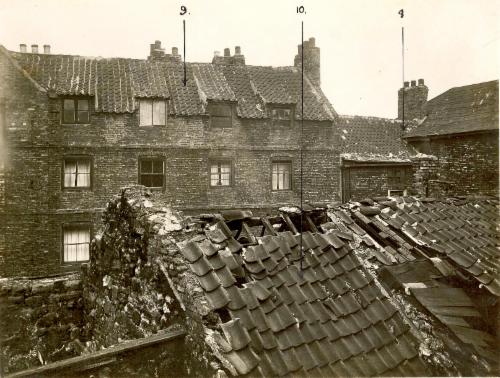
13 Bottle Bank, Ruddam's Court, Gateshead
Photographer: Frank & Sons
Date: Date Unknown
Reference Number: GL002661
Bottle Bank and Bridge Street, together with the north end of the High Street originally formed the main business and shopping streets of Gateshead until their demolition from the 1930s onwards. Bottle Bank took its name from the saxon word ‘botl’ meaning settlement or dwelling, although it is sometimes erroneously called ‘Battle Bank’. Behind the shops were narrow courts and alleys, such as Ruddam's Court, which housed many families in crowded tenements.
This photograph was taken during a survey of Gateshead housing taken in the 1930s. Under the Housing Act of 1930, the Council was given much greater legal power to deal with slum housing. The worst housing was around the High Street and Quayside areas of the town. Four and five storey tenements in the Pipewellgate and Hillgate areas housed muiltiple families and huddled narrowed courts provided accomodation in the High Street and Oakwellgate areas. The Housing Act meant that whole areas of housing could be demolished and between 1932 and 1935 Barn Close, Pipewellgate, Hillgate, Bridge Street, Church Street, Old Fold and many of the High Street courts were acquired by compulsory purchase order and demolished. (Manders, 1973)
Advertisement

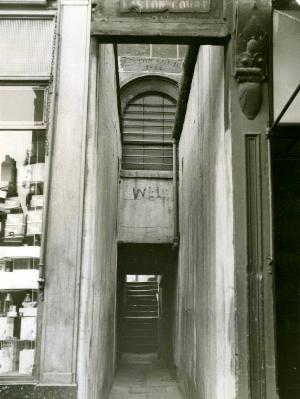
Entrance to Easton Court, Gateshead
Photographer: Unknown
Date: Date Unknown
Reference Number: GL008254
Some of the worst housing in Gateshead was situated behind Gateshead High Street. Huddled narrowed courts and entries provided accomodation for large families in the High Street and Oakwellgate areas. The houses were often badly built from rubble and quarry waste and were overcrowded because of the shortage of housing for workers. The only access to most of these courts was a narrow passage between the shops on the High Street.
Conditions in these streets eventually became so bad that whole areas had to be demolished. Between 1932 and 1935 Barn Close, Pipewellgate, Hillgate, Bridge Street, Church Street, Old Fold and many of the High Street courts were demolished.
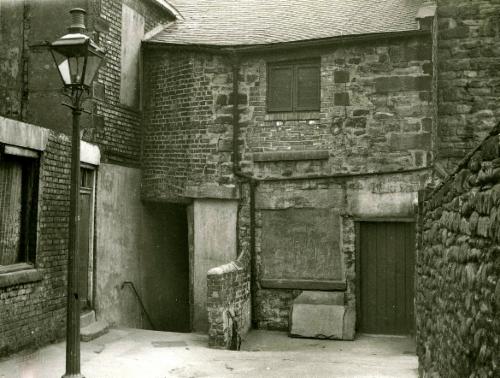
4 Easton Court, Gateshead
Photographer: Unknown
Date: Date Unknown
Reference Number: GL008261
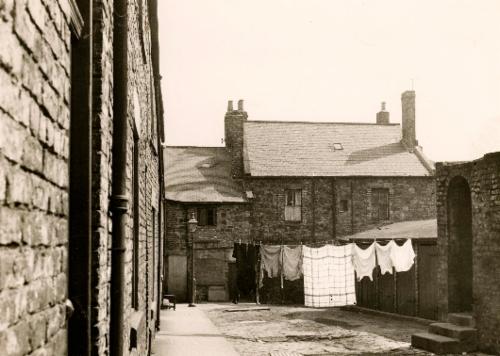
Easton Court, Gateshead
Photographer: Unknown
Date: Date Unknown
Reference Number: GL001516
Numbers 16, 14, 12, 10 and 8 Easton Court, showing builging front walls.
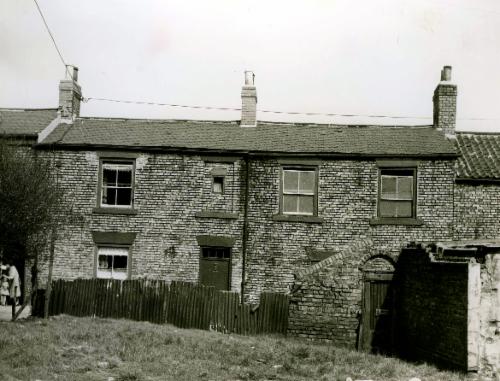
14-16 Easton Court, Gateshead
Photographer: Unknown
Date: Date Unknown
Reference Number: GL008259
The lack of house-building during the First World War had caused a serious shortage of housing across Great Britain. In 1919 the Addison Acts required local authorities to assess housing needs and to built new houses for rent.
In the 1920s new estates were built at Carr Hill, Bensham, Lobley Hill, Old Fold, Wrekenton and Deckham Hall. All houses were to have a scullery, larder, coal store, bath and indoor w.c. The new estates had wide streets lined with trees and were very different from the cramped terraces people were used to.
The Council also had to address the poor housing conditions in the town centre. The worst areas were close to the river where overcrowding and risk of disease was at its worst. (Taylor, S. & Lovie, D. 2004)
Under the Housing Act of 1930, the Council was given much greater legal power to deal with slum housing. The Act meant that whole areas of housing could be demolished and between 1932 and 1935 many of the streets in and around the town centre were acquired by compulsory purchase order and demolished. (Manders, 1973)
House-building came to a stop during the Second World War and overcrowding in Gatesehead once again became a big problem. After the war the Council set to work building new estates at Highfield and Blue Quarries and later at Beacon Lough and Cedars Green.
However, by the mid 1950s there was a serious shortage of traditional building materials and during the 1950s and 1960s concrete was used to build modern ‘high rise’ housing. The new building schemes were combined with a vigorous programme of slum clearance and by 1970s rows of terraces in Bensham, the Teams area and Central Gateshead had been demolished.
Easton Court was demolished in the late 1950s / early 1960s.
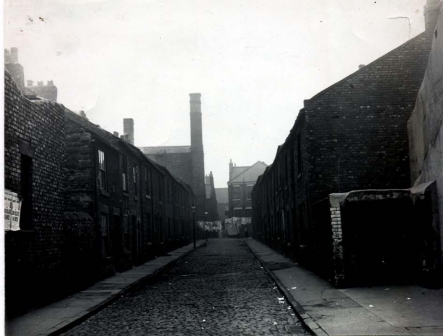
Leonard's Court
This street was named after James Leonard who had market gardens on this site. It was one of the worst areas of Gateshead in Victorian times and was chiefly inhabited by the Irish. In the 1853 cholera epidemic there was at least one death in every household in this street.
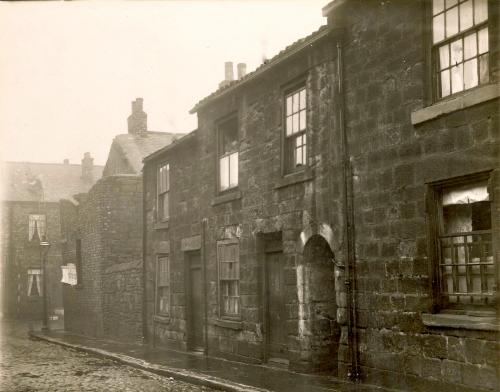
24-26 Leonards Court, Gateshead, 1930s
Photographer: Unknown
Date: 1930s
Reference Number: GL004397
Item Description: Situated on the east site of Gateshead High Street, this street was named after James Leonard who had market gardens specialising in spruce and other fir trees on this site. During Victorian times, it housed a high proportion of Irish immigrants and was the scene of 15 deaths in the 1853 cholera epidemic. Together with Pipewellgate and the area known as ‘The island’ this was regarded as one of the worst areas of town
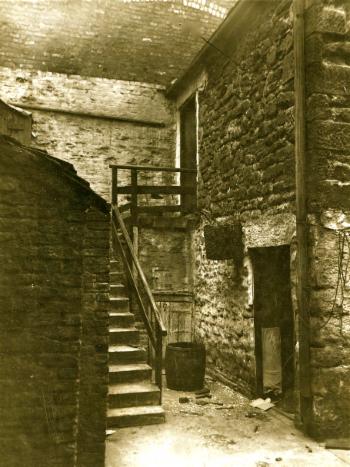
Yard of 58 East Street and 26 Leonards Court, Gateshead, 1930s
Photographer: Gateshead County Borough Public Health
Date: 1930-1937
Reference Number: GL008273
This street was demolished in 1937. See Gateshead County Borough Public Health slum clearance files - Area no.9.
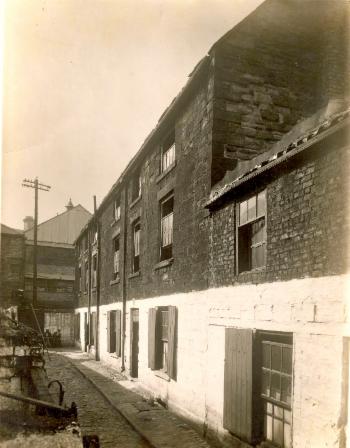
Dobsons Court, Off Mirk Lane/Bottle Bank, Gateshead
Photographer: Frank & Sons
Date: Date Unknown
Reference Number: GL002873
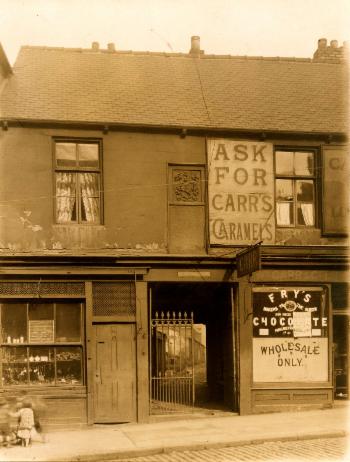
Entrance to Powells Court, High Street, Gateshead, 1939
Photographer: Unknown
Date: 1939
Reference Number: GL000106
Named after Thomas Powell, founder of Powell’s Almshouses. On 16th July 1728 Thomas Powell, a Newcastle merchant, left all his possessions ‘towards building an alms house for poor men and women in Gateshead’. The alms house was built soon after by Powell’s trustees in 1731, on the east side of the High Street. From 1750 it was used as the parish poor house and was enlarged in 1775. It remained the poor house until 1841, functioning also as a workhouse. The workhouse arms can be seen above the entrance next to the Carr's Caramels sign.
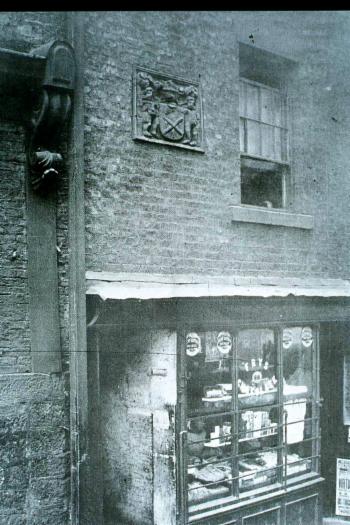
Is this another entrance to Powells Court, High Street, Gateshead, 1930s?
Photographer: Unknown
Date: Date unknown
Reference Number: Negs005
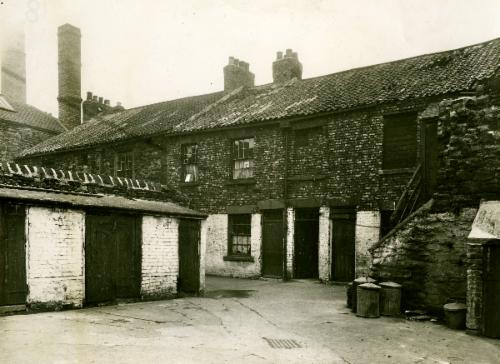
Hewitt's Court, off High Street, Gateshead, c1936
Photographer: Unknown
Date: C1936
Reference Number: GL003896
Item Description: Situated near Nuns Lane. Demolished 1937.
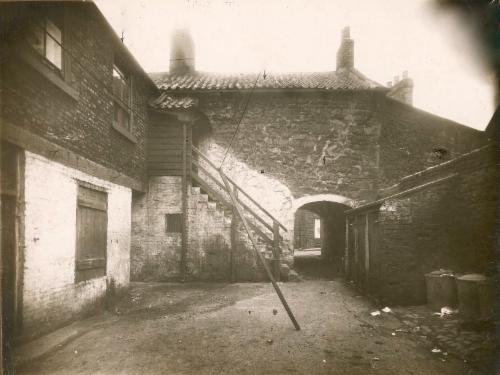
Jamieson's Court, Swan Street, Gateshead, 1930s
Photographer: Gateshead Council
Date: 1930
Reference Number: GL004331
This court was demolished in 1937.

Leonards Court, Gateshead, 1937
Photographer: Unknown
Date: 1937
Reference Number: GL000094
Situated on the east site of Gateshead High Street, this street was named after James Leonard who had market gardens specialising in spruce and other fir trees on this site. During Victorian times, it housed a high proportion of Irish immigrants and was the scene of 15 deaths in the 1853 cholera epidemic. Together with Pipewellgate and the area known as ‘The island’ this was regarded as one of the worst areas of town
For more go to Gateshead Local Studies
search for Court
Housing Courts brought to you by
The Felling Heritage Group
